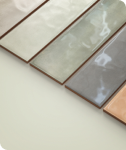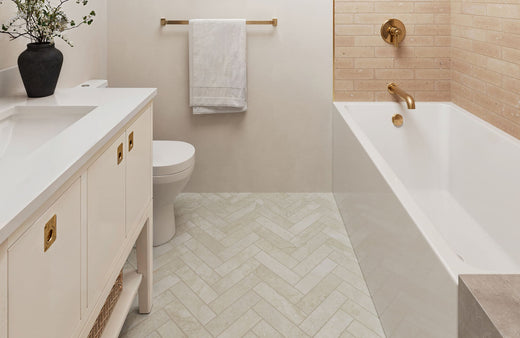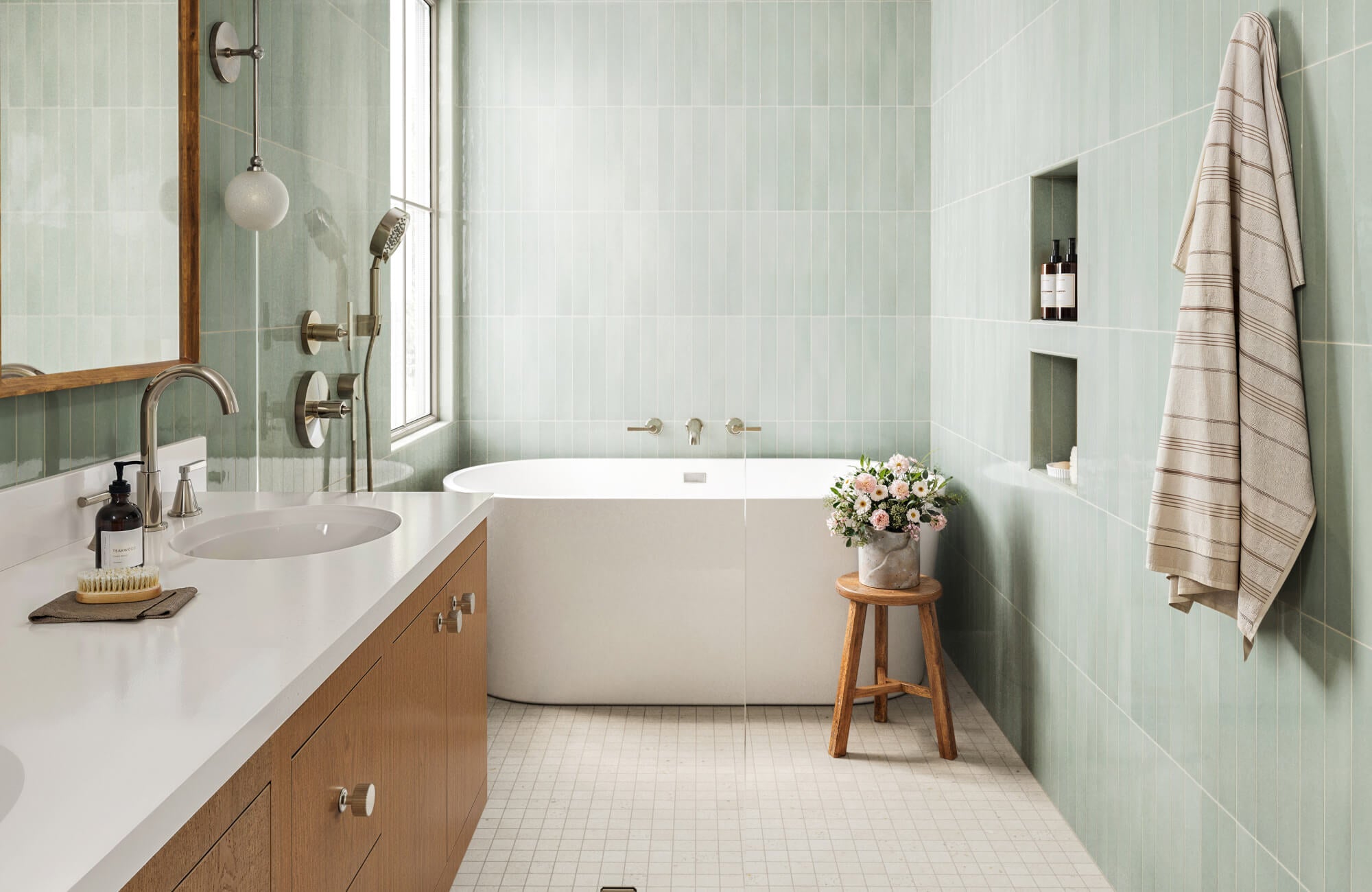Maintaining a safe and stylish bathroom begins with addressing the challenges of slippery tiles. Whether caused by water, soap residue, or the inherent smoothness of certain tile materials, slippery surfaces are a common and hazardous issue in bathrooms.
In this article, we'll explore practical strategies for preventing bathroom tiles from becoming slippery. From immediate safety measures to long-term solutions such as choosing slip-resistant tiles and coatings, you'll discover how to make your bathroom safe and stylish while remaining functional.
Common Causes of Slippery Bathroom Tiles
Bathroom tiles become slippery primarily due to the accumulation of water and soap residue, which creates a thin, slick layer that reduces traction on the surface. Water alone can make tiles hazardous, but when combined with soap, shampoo, or cleaning products, it forms a slippery film that is difficult to notice and easy to overlook.
Certain tile materials, such as glazed porcelain or polished ceramic, are more likely to be slippery because their surfaces are naturally smooth and less absorbent, which allows water and residue to pool rather than disperse. Over time, these conditions can worsen as grout lines trap more residue, further contributing to the problem.

Immediate Safety Measures
Ensuring bathroom safety begins with quick, practical fixes that reduce the risk of slips and falls. Non-slip bath mats and rubber-backed rugs are ideal for providing immediate traction, particularly near the shower or sink where water tends to accumulate. Furthermore, adhesive anti-slip stickers or strips, often made of textured materials such as vinyl, can be applied directly to tiles in high-risk areas, adding an extra layer of protection without requiring much effort.
Installing grab bars and handrails is another simple but effective measure, especially for families with young children or elderly people who require extra stability. Proper lighting is also important because it improves visibility and allows you to easily identify wet or slippery areas, lowering the likelihood of accidents.

Long-Term Solutions for Slip Prevention
Selecting the right tiles and treatments is key to reducing slipperiness in high-moisture areas. Below we'll look at effective anti-slip coatings and how slip-resistant tiles can provide long-term durability, safety, and functionality to your bathroom floors.
Anti-Slip Coatings for Added Safety
Investing in anti-slip coatings is a practical way to improve floor traction while maintaining the appearance of your tiles. Not only do these treatments add a textured layer to the surface, but they also enhance grip and significantly lower the risk of slipping. For a more permanent solution, professional anti-slip treatments offer long-lasting results, especially for bathrooms prone to moisture and heavy use. On the other hand, DIY alternatives such as anti-slip sprays and solutions are less expensive and more accessible—however, they may need to be reapplied every few months to remain effective.
Choosing Slip-Resistant Bathroom Tiles
Mosaic tiles such as our Sloane 2x2 Matte Porcelain Mosaic Tile in Pearl, as shown in the image above, offer enhanced slip resistance. Their smaller size creates more grout lines, which significantly improves overall traction and makes them particularly ideal for moisture-prone areas such as bathrooms.
Materials and finishes also play a key role in slip prevention in bathrooms. For instance, durable materials such as porcelain and ceramic stand out for their water resistance and natural slip-reducing properties, making them a reliable choice for both safety and longevity. Textured surfaces, on one hand, provide added grip, making them ideal for wet areas, while matte finishes offer a non-reflective surface that reduces slippage and maintains a sleek, modern look.
If you want to see how the right bathroom tile can transform your space, use our augmented reality (AR) tool. It's a great way to test out different options in real-time and see how each tile finish, color, and size affects your interior design before making a final decision.

How Regular Maintenance Prevents Slips
Regular cleaning is essential for keeping bathroom tiles safe and slip-free because it removes soap scum, mold, and grime, all of which can make surfaces dangerously slippery. Moreover, using cleaning solutions that are specifically designed to dissolve residue without damaging tiles results in better traction and a more durable finish.
In addition, it's important to check your tiles and grout on a regular basis for signs of wear or damage, as cracked tiles or loose grout can contribute to slipperiness. By sticking to a consistent cleaning routine and addressing minor issues as soon as they arise, you can keep your bathroom floors both safe and attractive.
Conclusion
Addressing slippery bathroom tiles is crucial for creating a safer and more functional space. By combining regular maintenance, selecting slip-resistant tiles, and investing in long-term treatments like anti-slip coatings, you can significantly reduce the risk of accidents. On top of that, incorporating both immediate solutions and preventative measures can ensure lasting safety without compromising the aesthetic appeal of your bathroom.
If you're looking for expert advice on choosing the right slip-resistant tiles for your bathroom, feel free to contact us! Our team is ready to help you design a safer, stylish space that meets your needs and enhances your peace of mind.








